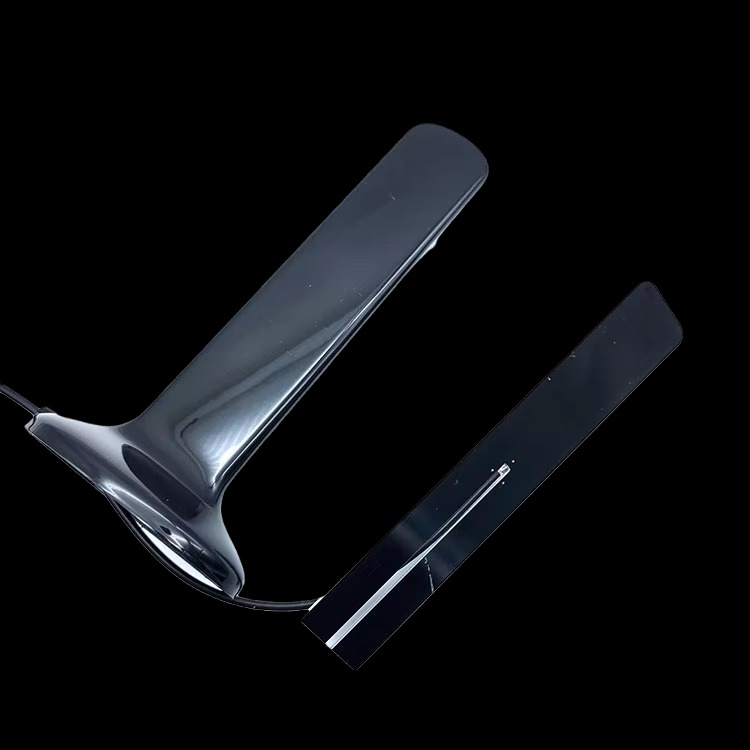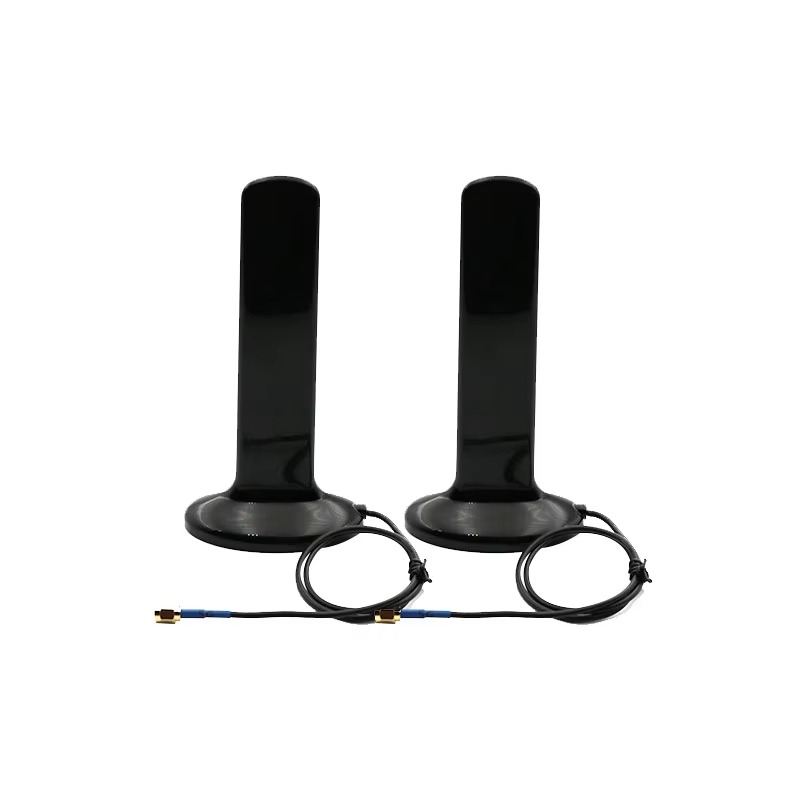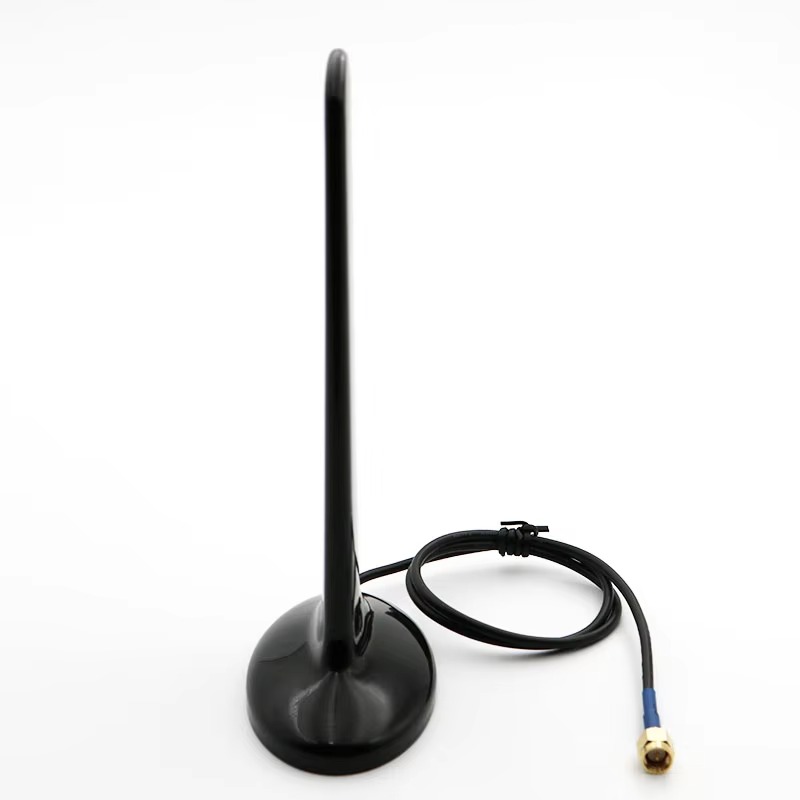Applications
The compact 4G WiFi GPS combination antenna has a wide range of applications across various industries and consumer products. In the consumer electronics sector, it is commonly integrated into smartphones, tablets, laptops, and wearable devices. Smartphones with this antenna can provide users with accurate navigation, high - speed internet access via 4G or WiFi, and the ability to use location - based services such as finding nearby restaurants, stores, or public transportation. Tablets and laptops benefit from the combination antenna by enabling seamless connectivity for work and entertainment, whether it's accessing cloud - based applications, streaming media, or participating in video conferences. Wearable devices, such as fitness trackers and smartwatches, can use the antenna for features like tracking outdoor activities with precise location data, syncing workout data with mobile apps via WiFi, and receiving calls and messages when paired with a smartphone over 4G.
In the automotive industry, the combination antenna is used for in - vehicle navigation systems, telematics, and connected car applications. It enables accurate positioning for navigation, allowing drivers to receive turn - by - turn directions and real - time traffic updates. The 4G and WiFi functionality supports features such as in - car Wi - Fi hotspots, enabling passengers to connect their devices to the Internet, over - the - air software updates for the vehicle's onboard systems, and vehicle - to - everything (V2X) communication, enhancing the safety and convenience of driving.
In the logistics and transportation industry, the combination antenna is used in fleet management systems. It allows companies to track the location of their vehicles in real - time, optimize routes, monitor driver behavior, and manage fuel consumption. The 4G connectivity enables seamless communication between the vehicles and the central management system, facilitating the transfer of data such as delivery status, vehicle diagnostics, and maintenance requirements.
In the Internet of Things (IoT) domain, the compact 4G WiFi GPS combination antenna is used in a variety of applications. Asset tracking devices equipped with this antenna can monitor the location of valuable assets, such as containers, equipment, and vehicles, and transmit the data over 4G or WiFi networks. In smart city applications, IoT sensors with the antenna can be used for traffic management, environmental monitoring, and public safety, providing accurate location - based data and enabling efficient communication between different devices and systems.
Future Trends
One of the future trends for compact 4G WiFi GPS combination antennas is the further miniaturization of the components. As technology advances, new materials and manufacturing techniques, such as nanotechnology and 3D printing, will be explored to reduce the size of the antenna even further without sacrificing performance. This will enable the integration of the antenna into even smaller and more lightweight devices, such as tiny IoT sensors, implantable medical devices, and miniature drones.
Applications and Future Trends
Future Trends
One of the future trends for compact 4G WiFi GPS combination antennas is the further miniaturization of the components. As technology advances, new materials and manufacturing techniques, such as nanotechnology and 3D printing, will be explored to reduce the size of the antenna even further without sacrificing performance. This will enable the integration of the antenna into even smaller and more lightweight devices, such as tiny IoT sensors, implantable medical devices, and miniature drones.
The integration of artificial intelligence (AI) and machine learning (ML) algorithms with compact 4G WiFi GPS combination antennas is an emerging trend. AI and ML can be used to optimize the performance of the antennas in real - time. These algorithms can analyze the received signals, detect changes in the signal environment, and adjust the antenna's operation parameters, such as gain, filtering, and interference mitigation, to adapt to different conditions. For example, AI can predict areas with potential signal interference based on historical data and network traffic patterns, and proactively adjust the antenna's frequency or power settings to ensure stable communication and accurate positioning. ML models can also be trained to optimize power consumption, dynamically allocating resources to different functions (GPS, 4G, WiFi) according to the device's usage scenario, thereby extending the battery life of portable devices.
Advancements in communication technologies will also have a profound impact on the development of these antennas. The ongoing roll - out of 5G and the research and development of future 6G networks will demand antennas that can support higher data transfer rates, lower latency, and greater network capacity. Compact 4G WiFi GPS combination antennas will need to evolve to be compatible with these new communication standards. Future antennas may incorporate features such as massive MIMO (Multiple - Input Multiple - Output) technology, which uses multiple antennas to increase data throughput and link reliability. This will enable devices to handle more complex applications, such as high - definition video streaming, virtual reality, and real - time remote control, with greater efficiency.
There is also a growing trend towards the development of multi - functional antenna modules that integrate additional functions. In addition to GPS, 4G, and WiFi, future antennas may incorporate Bluetooth, NFC (Near - Field Communication), and various sensors (such as temperature, humidity, and motion sensors). This integration will further simplify the design of devices, reduce costs, and provide users with more comprehensive wireless connectivity and functionality. For instance, in a smart home device, a single multi - functional antenna could enable location - based control, wireless communication with other smart devices, and environmental monitoring, all in one compact unit.
Moreover, the demand for sustainable and energy - efficient technologies will drive the development of more power - saving designs for compact 4G WiFi GPS combination antennas. New materials with lower electrical losses and more efficient power management circuits will be developed. Additionally, the concept of “intelligent sleep” modes will be enhanced, where the antenna can automatically enter a low - power state when not in use or when the device is in an area with stable and reliable connectivity, further reducing overall power consumption.
Conclusion
The compact 4G WiFi GPS combination antenna represents a significant milestone in the evolution of wireless communication and positioning technology. By integrating three essential functions into a single, space - efficient unit, it has addressed the pressing needs of modern electronics for multifunctionality, connectivity, and miniaturization. This antenna has not only enhanced the capabilities of a wide range of devices, from consumer electronics to automotive and IoT applications, but also opened up new possibilities for innovation across various industries.
However, the development and widespread adoption of this technology are not without challenges. Interference management, power consumption, and compatibility issues remain significant hurdles that require continuous research and engineering efforts. Overcoming these challenges will be crucial for maximizing the potential of compact 4G WiFi GPS combination antennas and ensuring their reliable performance in diverse environments.
Looking ahead, the future of these antennas is promising, with exciting trends on the horizon. Miniaturization, AI and ML integration, compatibility with advanced communication standards, multi - functionality, and energy efficiency will be the key drivers of innovation. As these trends unfold, compact 4G WiFi GPS combination antennas will continue to evolve, becoming more intelligent, efficient, and versatile. They will play an increasingly vital role in shaping the future of the connected world, enabling seamless communication, precise positioning, and the development of smart, interconnected systems that enhance our daily lives and drive technological progress across multiple sectors.




































































 Language
Language
 En
En Cn
Cn Korean
Korean

 Home >
Home > 







 18665803017 (Macro)
18665803017 (Macro)













